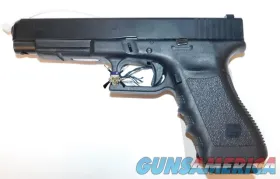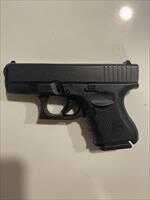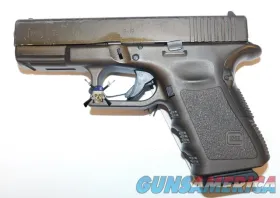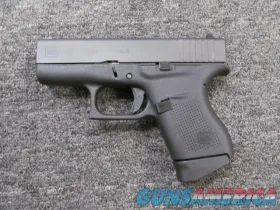The Crime Prevention Research Center (CPRC) has released updated research diving deep into active shooting cases from 2014 to 2023.
Their study explores critical questions: Do civilians with concealed handgun permits accidentally shoot bystanders? Do they get in the way of police? How do they compare to law enforcement in stopping active shooters?
The findings might surprise you.
Table of contents
Civilians Stopping Active Shooters: Myths vs. Reality
Media portrayals often show defensive gun use going horribly wrong—bystanders hit, guns stolen, or well-meaning civilians getting in the way of police.
But CPRC’s research paints a very different picture. Out of 180 active shooting cases stopped by concealed handgun permit holders:
- Accidentally shot a bystander: 1 case (0.56%)
- Got in the way of police: 0 cases (0.0%)
- Had their handgun taken away: 1 case (0.56%)
- Were killed while stopping the attack: 2 cases (1.1%)
- Were injured while saving others: 44 cases (24%)
The narrative that civilians recklessly endanger others doesn’t hold up to the data. In fact, civilians successfully stopped active shootings 51.5% of the time in non-gun-free zones, compared to 44.6% by police.
SEE ALSO: Deep Dive into the MAC 9 1911 Double Stack
How Do Police Compare?
The research also examined 350 active shooter cases where law enforcement intervened:
- Accidentally shot the wrong person: 4 cases (1.14%)
- Twice, they accidentally shot fellow officers.
- Twice, they accidentally shot civilians.
- Police shot and wounded: 100 cases (28.6%)
- Police killed while stopping the attack: 27 cases (7.7%)
Interestingly, police officers were more likely to be killed or wounded in these situations compared to armed civilians.
In fact, officers were 5.94 times more likely to be killed than permit holders. Additionally, police were twice as likely to accidentally shoot the wrong person (1.14% vs. 0.56% for civilians).
The Bottom Line
The numbers tell a clear story: Civilians with concealed handgun permits effectively stop active shooters with minimal collateral damage. They are less likely to shoot bystanders and face fewer casualties compared to law enforcement.
These findings challenge common misconceptions about defensive gun use and highlight the critical role of armed civilians in public safety.
Why It Matters
This study offers valuable insights into the real-world effectiveness and safety of concealed carry permit holders during active shooter situations. It reinforces the argument for responsible civilian gun ownership as a legitimate and effective form of self-defense.
For those of us who support the 2A, these findings underscore the importance of protecting the right to bear arms. As the debate over gun control continues, the facts speak for themselves—responsible, armed citizens save lives.
Stay informed and join the conversation. For more detailed data and analysis, visit the Crime Prevention Research Center.
*** Buy and Sell on GunsAmerica! ***












The results of this study are inconclusive but very interesting. The problem is the difference in sample size between the 2 cohorts. If both cohorts were of equal size then the error rate would be relative and thus a better conclusion could be drawn. However, using other statistical tools not offered in this analysis we could better understand how closely the inferences match to the data. My reasoned opinion is that citizen intervention is no worse, and possibly better than police intervention because of the immediacy of application of intervention is fast moving, fluid situations of an active shooter event.
Mag dumping moron police officers endanger more people than ANY citizen with a firearm!
Hours of it out on YuckTube demonstrating the stupidity!
I think that civilians have a lower casualty rate than the police is because the shooters are not expecting resistance from civilians. The element of surprise favors the civilian.
I believe that armed citizens are much more conscious of the ramifications of injuring a bystander, or wrong person. We do not have qualified immunity and the finances and protection of the police department, unless you have USCCA, AOR, or one of the others to help with the aftermath. The citizen is just more careful. The citizen does often practice much more than LEOs.
Without adding how many total number of involved shootings,the findings are not accurate. Police are 5 times more likely to be involved with a shooter than a civilian, so their numbers should be higher than civilians. I do agree that civilians most likely spend more time shooting thier guns and honing their skills than most police officers.
There was an article, if I remember correctly, in Guns and Ammo magazine probably 40 years ago, where they did this same type of study. That study found that arms civilians, permit holders or not, were about 10% more likely to stop a shooter and 10% less likely to shoot the wrong person.
Larry, please drop the “active” in your discussion about shooters. If there are active shooters what are inactive shooters? They are just shooters or they aren’t shooters. All you are doing is reinforcing the anti-gun agenda by using their terminology.
Without disclosing the number of civilian defensive gun uses versus police encounters where gunfire was exchanged, you may as well be comparing apples to oranges. The higher the number of shooting incidents, the higher the probability of things going sideways. (Yes I know that there are many defensive gun uses annually, but most do not involve gun fire but the mere display of a weapon.) Unfortunately, other than John Lott, we know that the police under report civilian defensive gun uses.
thats because civilians will train harder and more often since it is self defense and not a job.